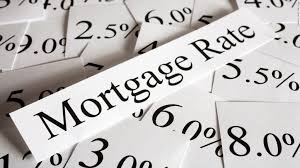Increased Stamp Duty and Decreased Tax Allowances –
What Do The Buy-to-Let Changes Mean for You?

what do buy to let tax changes mean to you
Back in the 2015 Autumn Statement, there was talk of making some big changes in the buy-to-let market, by the chancellor of the exchequer. Since then, further details and more in-depth rules have been released which could have a big impact on anyone with a portfolio of properties; whether that just be a second home or an entire town’s worth. It’s important that any buy-to-let landlord is aware of what is due to change over the coming year, so here’s a breakdown of everything you need to know.
Increased Stamp Duty
Perhaps one of the biggest blows for BTL landlords, or anyone planning on buying a second home, will be the increased Stamp Duty Land Tax. By April 1st 2016 the amount you pay in stamp duty will rise to 3% above where the rates currently stand. That means you would pay 5% SDLT on any amount between £125,001 and £250,0000 – as opposed to 2%, and so on. This also means that those buying second properties will not benefit from the 0% stamp duty rate on the first £125,000 either, as this rises to 3%. It is important that you factor the increased costs into your budget if you’re planning on getting a buy-to-let mortgage in the future.

Calculating your buy to let tax bill
Decreased Tax Allowances
Another rule change that’s causing a bit of upset with buy-to-let landlords is the reduction of tax relief. From 2017 these allowances will slowly be reduced over a period of four years, meaning that those who run a BTL business could end up paying a lot more in taxes. There are different types of relief being cut down, so let’s look at each one in more detail:
- When the new rules come into force, BTL landlords will have to pay their personal tax rate on the total amount of income from their property (or properties). By 2021 at the latest you will also only be able to deduct 20% of mortgage interest payments to calculate the total amount of tax you owe. Currently, you can claim all of that interest against the income from the property, making your tax bill a little bit more bearable. This will also change by 2020/21 however.
- Wear and tear rules are also changing, which could impact the amount of tax buy-to-let landlords will have to pay. Currently, there is a tax-free allowance in place for replacement of things such as carpets or furnishings. It doesn’t matter how much is spent, the total allowance can be used to calculate taxable profits and income. This is likely to change in April 2016, however, as landlords will need itemised receipts of what they have purchased for the property. This means that you will need to keep vital records of everything spent when dealing with wear and tear.
- It is important to remember that the tax rules for everyone will be slightly different, depending on circumstances. Your personal tax rate, what the property is used for, and several other factors will all come into play when working out how these changes will affect you. The best thing to do is get advice from HMRC who can give more personalised landlord tax rules.
For more information speak to one of our buy to let mortgage specialists on 0800 193 0178. All of our brokers have at least 17 years expeience as a mortgage broker.


Leave A Comment
You must be logged in to post a comment.